The steampunk aesthetic is to steam as the dieselpunk aesthetic is to diesel. It is important to understand both aesthetics as they are considered to be close cousins. The steampunk aesthetic deals with industrial steam power found in the Victorian era mixed with attributes of Tesla and sustainable energy. Dieselpunk draws from the interwar period that saw the use of diesel powered machines and major weapon development between the World Wars. An easier image to consider is a reimagining of The Great Gatsby in a cyberpunk world that results in Dieselpunk.
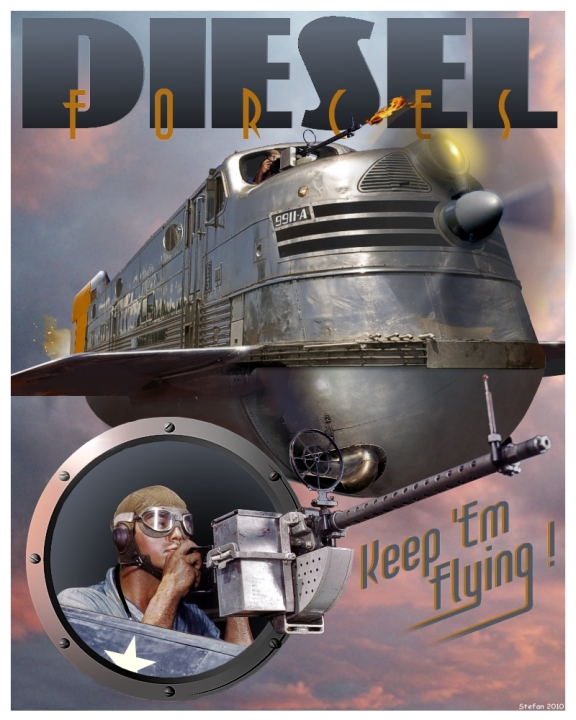
http://www.dieselpunks.org/)
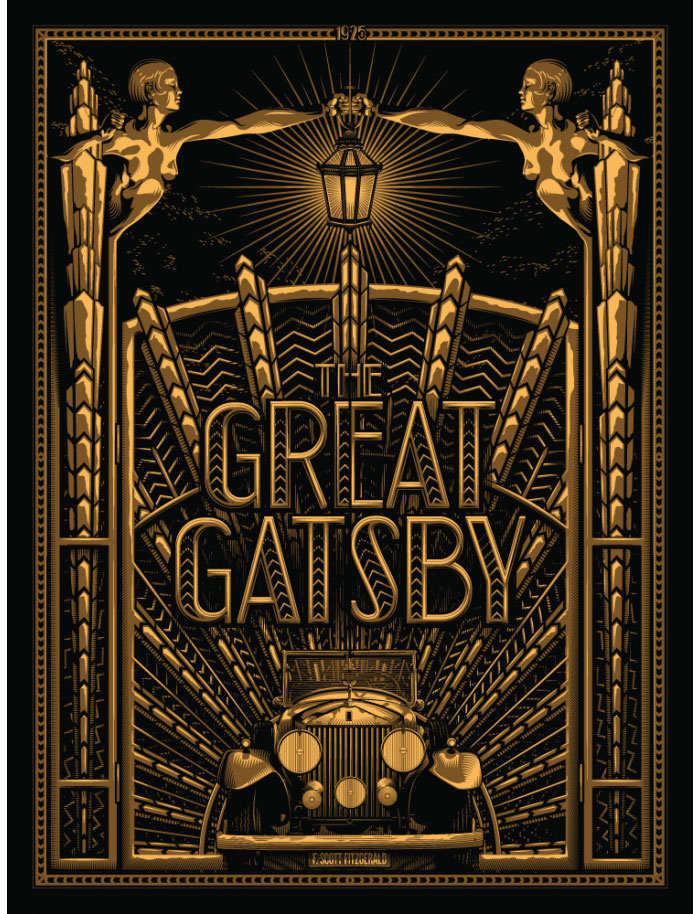
http://shop.tracieching.com/)
The images above depict a propaganda painting created in the dieselpunk aesthetic compared to The Great Gatsby artist rendition of a film poster. The font is very similar and this poster can be easily compared to the next few images that are created with this aesthetic in mind.
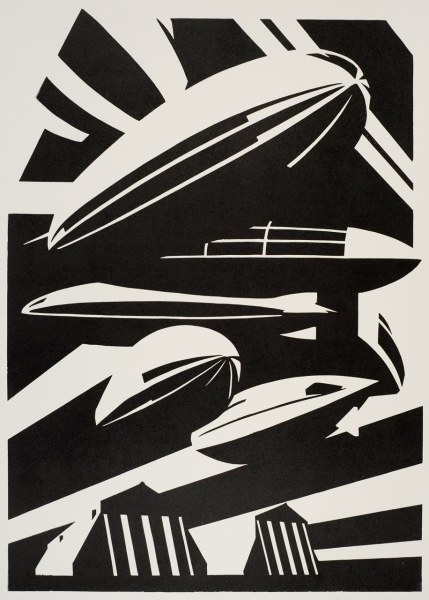
http://www.dieselpunks.org/)
The above image features military blimps that were utilized heavily during the World Wars. The dieselpunk aesthetic relies heavily on the militias and weaponry of the interwar period between World War I and World War II. The black and white design is heavily throughout. The dieselpunk aesthetic is a major piece of the noir genre.
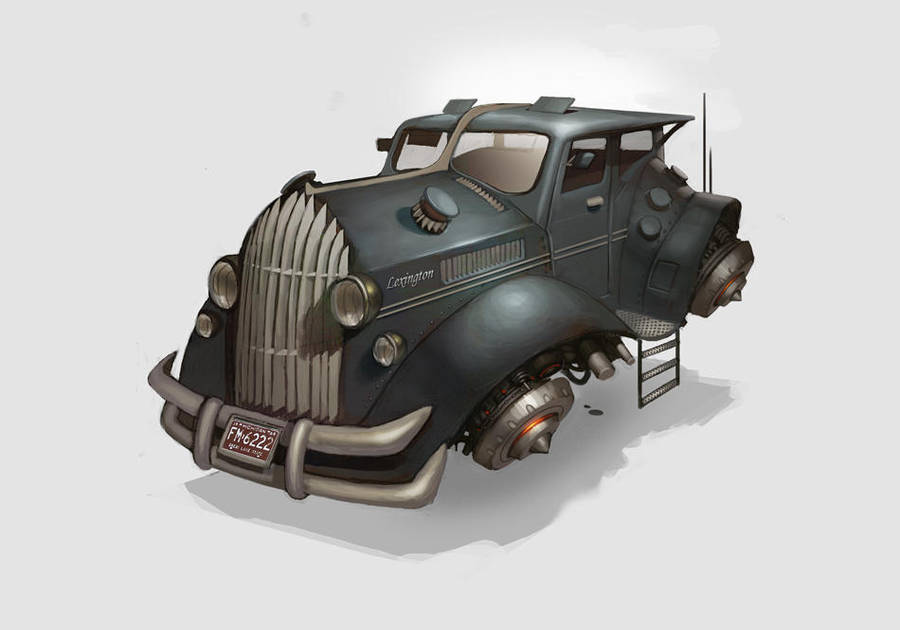
https://www.deviantart.com/adrian-w/)
The meaning of the word dieselpunk is broken down into diesel, for the use of diesel machines of the time, and the work punk that makes up a class of counterculture nature with opposition to contemporary aesthetics. The futuristic qualities combined with the older designs of cars is a major contributor to the dieselpunk aesthetic.
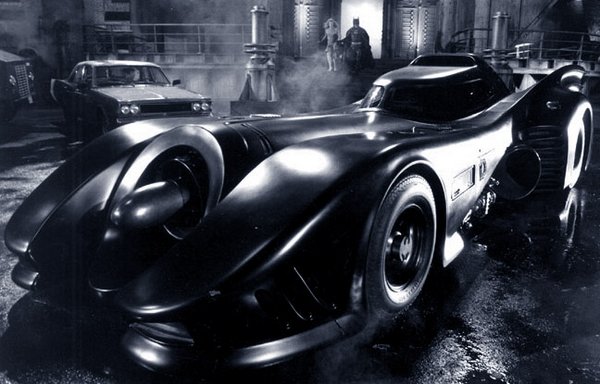
(The Batmobile – Tim Burton directed
Batman , 1989)
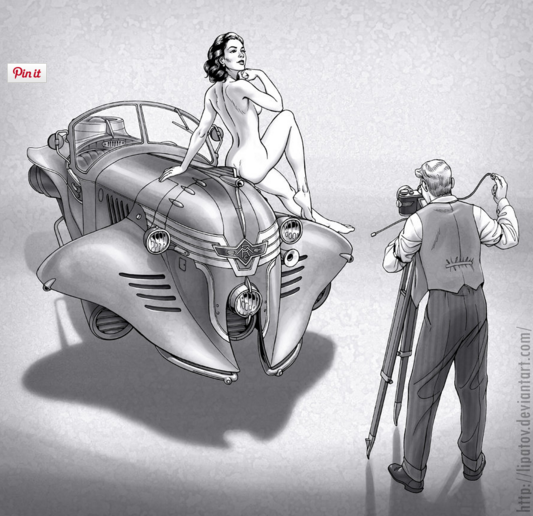
https://www.deviantart.com/lipatov)
The overall characterization of dieselpunk is most closely related to steampunk but it derives from a different time period. This results in a dirtier and darker tone that contrasts the organic curves of the futuristic machines. There are hints of color but this time in history was ruled by the development of weapons and fear after the first World War and leading into the next. This darkness is seen throughout and also creates a pleasing contrast in the darkness. Creating an image with the dieselpunk aesthetic creates a unique image that inspires creativity in its fresh mix of organic and abstract structure throughout each composition. This can absolutely be applied to a physical design through the combination of rigid and soft lines with hints of color in the darkness.

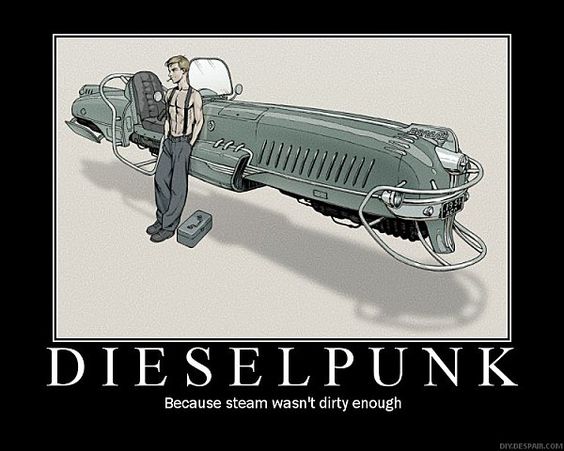
3 Comments. Leave new
When I opened this post I was expecting the content to almost identical to steam punk. There are definitely some similarities, but you did a great job of highlighting the differences. The images on this post show highlight the motivation in a different time period, and how the culture and society bred this aesthetic. Very cool.
I didn’t know diesel punk existed before reading this blog post. I like how you explained how it was built of the steampunk aesthetic but was made to fit the technologies of its time. It’s interesting to see that this aesthetics uses black, white, and other neutral colors since it came about during a period of conflict. I would be interested to know if the diesel punk aesthetic goes beyond posters/prints and how it can be applied to 3D design.
You did a great job explaining what dieselpunk is and what its key elements are. When clicking on the post I did not expect to see an iteration of the Batmobile, but it fits in because Burton’s ’89 Batman film was one of the darker ones. You contrast dieselpunk and steampunk. I would love to see dieselpunk-themed objects, similar to how people have built steampunk-themed keyboards and coffeemakers and stuff.